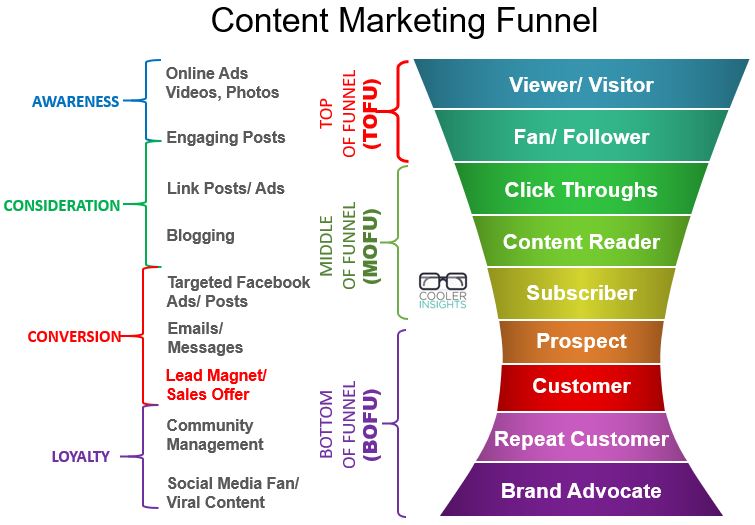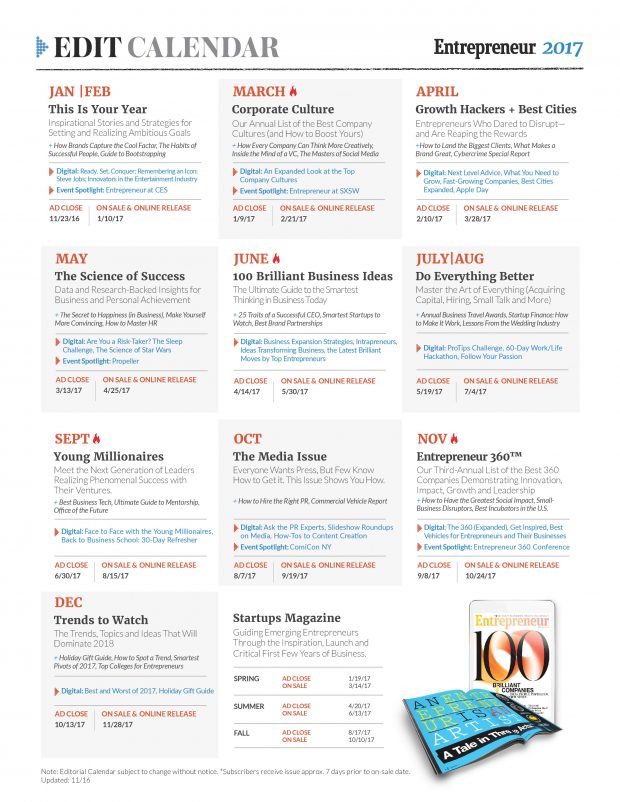
Feeling clueless about what content topics you should write on? Stressed by the need to fill your content calendar?
As a content marketer myself, I know how frustrating it feels.
This is why I’ve come up with a systematic step-by-step guide to help you brainstorm razor-sharp content marketing ideas that you can use.
To make this article really useful, I encourage you to jot down each step and only proceed to the next after you’ve completed them.
Ready to transform your content plans with amazing ideas?
Let’s go!
1) Identify Content Marketing Goals
Always begin with your content marketing goals.
Do you intend to improve your brand awareness? Sharpen your community engagement efforts? Generate more leads? Increase customer conversions? Strengthen your customer loyalty and advocacy?
Each of these goals may require slightly different content ideas and types. Depending on your goals, you may be using different forms of content to influence different customer groups – from visitors to prospects to customers to badge wearing advocates. These can be zoned into different levels on your Content Marketing Funnel, as shown below. (Read more about marketing funnels here.)

Once you’ve identified your specific goals (make sure that they’re SMART, ie Specific, Measurable, Achievable, Realistic and Time-bound), we can move on to the next stage.
2) Assemble Diverse Team
The best content marketing ideas often come from people who are working the ground.
They may be engineers involved in designing your products, service technicians involved in maintenance and repair, customer service representatives involved in handling customer complaints, or sales personnel who interact with customers daily.
You may also get good content ideas from your customers themselves. Arrange a time where they are likely to be less busy, and provide them with a carrot – a dining or shopping voucher works perfectly here. Customers are great sources of stories that you can use.
Alternatively, suppliers and distributors may also be rich sources of content ideas. Have coffee with them, and see if they’ve got any ideas which you can tap.
3) Conduct Online Research
The online world is a great place to discover potential content ideas. Thankfully, there are various tools and techniques you can use to uncover them.
a) Search Engine Optimization (SEO) Keywords
You can use a variety of SEO keyword research tools to come up with possible topics to write about. Here are some that I frequently use:
- Ubersuggest: Combining the capabilities of Google Ads Keyword Planner and Google Suggest, this free tool helps you identify profitable keyword combinations to write about
- Keyword Tool: Another useful utility which provides hundreds of possible long-tail topics and keyword combinations you can use.
- LSIGraph: This keyword generators helps to come up with Latent Semantic Indexed (LSI) keywords, which include synonyms and related words that helps your content to rank higher on Google’s search engine.
b) Online Forums
Contrary to popular belief, online forums are not dead. Many of them are treasure troves of customer pain points which you can craft answers for.
- Quora: A highly popular question and answer forum which can be sorted based on countries, topics and popularity
- Eat Drink Man Woman: One of the most active discussion forums in Singapore, focusing on lifestyle topics
- KiasuParents: Forums focused on parenting and education in Singapore
- SG CarMart: For all things related to car sales, maintenance, upgrading and accidents
4) Spy On Competitors
In the online world of content marketing, it is easy to find out what your competitors are doing.
There is an entire range of competitor spying techniques that you can use. Follow these steps:
- First, become of fan of your competitor’s Facebook pages and follow them on Twitter, Instagram, and LinkedIn.
- Scan through their social media posts, and zoom in on their most popular posts. These are the ones with the most likes/reactions, comments and shares.
- If you are on their Facebook page, click on the “Info and Ads” tab and learn what Facebook ads they are currently running.
- Use SpyFu to download their SEO and SEM Keywords, and use them for your own content efforts.
- Use BuzzSumo to find out which are the most shared pieces of content around any topic or competitor.
5) Steal from Popular Culture
Creating content can be soul-draining work. Just try writing a post every single day on Facebook, sharing an Instagram pic every two days, or coming up with a YouTube video each week.
Sooner or later you’ll run out of ideas.
To recharge and be inspired, indulge in the world of popular culture. Often you can get solid content topics and ideas from any of the following…
- Books that you’ve read
- Movies that you’ve watched
- Songs that you’ve listened to
- Videos that you’ve watched
- Games that you’ve played
- Art exhibitions that you’ve visited
- Performances that you’ve experienced
- Restaurants that you’ve patronised
Which brings me our next related topic.
6) Tap Trending News
Have you heard of Newsjacking?
Popularised by David Meerman Scott, it is a process where you “inject your ideas or angles into breaking news, in real-time, in order to generate media coverage for yourself or your business.”
Some of the top brands in Singapore using this technique include Ikea, Scoot, Changi Airport and SCDF.
The latest example below came from Skyscanner, hot on the heels of the latest iPhone XS launch.

To do so successful, do make use of Google Trends and Twitter to discern what the top trending topics are. You may also want to scan the headlines of your newspapers to glean some ideas from the top breaking news of the day.
7) Use Gamestorming Techniques
Have you heard of Gamestorming?
Well, it is a method of brainstorming using visual tools and techniques to derive ideas collectively as a team.
There are lots of free methods which you can tap on from the amazing Gamestorming blog. Here’s one called Innovation Generator which may be useful for generating content ideas among a group. I’ve adapted it specifically for content generation purposes.
Number of Players: 5 – 8
Duration of Play: 1 hour
How to Play:
1. Begin by giving your players post-its and markers. Draw three columns on a large white board or poster and label them as follows:
- Customers’/Prospective Customers’ Problems
- Possible Solutions
- Content Ideas
2. Ask players to think of problems that customers may have. Get them to write them on sticky notes and post them in the first column.
3. Work as a group to come up with at least 2 or 3 solutions to address each problem. Write these on post-its of a different color and put them in the second column.
4. Collectively think of content ideas that can come up from these solutions. For example…
- Customer Problem: Unsure how they should care for their different garments
- Possible Solutions: Publish series of blog posts (shared on Facebook) on caring for different materials
- Content Ideas: “How To Wash and Iron Your Silk Blouse,” “How To Wash and Iron Your Linen Skirt”….
5. Finally, streamline your ideas to 1 or 2 which you can implement.
8) Sort into Content Pillars
Now that you’ve got a boatload of content ideas in place, your next step involves organising them into content pillars.
So what is a content pillar?
Well, it is a big piece of content revolving around a specific topic that can be broken down into smaller pieces that can then be shared on different digital and social platforms. Examples of content pillars include books, training courses, webinars, eBooks, White Papers, videos, and guides.
You can use a mind-map to plot all your content topics and organise them into discrete categories. Each major brand can constitute a content pillar, with smaller branches forming derivative pieces of content.
Here’s a good example of a mind map for travel copy writing.

Courtesy of Vertical Measures
9) Plonk into Content Calendar
Phew! You’re almost there.
After you’ve got your content pillars in place, you need to put them into your content calendar.
Depending on the size of your content pillars and your frequency of social sharing, a content pillar should be able to last you between 4 to 6 weeks.
The key thing is to organise your calendar by the same thematic focus as your content pillar, and to slowly roll out your content pieces – be they blog articles, social media posts, or short videos – such that they build onto each other.
Here’s an example of a thematic content calendar from Entrepreneur magazine (via Hootsuite blog).

Courtesy of Entrepreneur
10) Craft, Publish and Share!
The final (and perhaps most important) step in your content marketing idea generating process is to execute them.
While rolling out your content pieces, it is useful to track your analytics such as the following:
- Audience Response: Are your content pieces gaining traction online in terms of their engagement, visits and shares?
- Best Time To Share: What are the best times for you to share your content?
- Frequency: Are you creating enough content to get the results which you need?
- Amplification: How effective are your advertised content pieces? Are you gaining the results that you desire?
Conclusion
Content ideation is often one of the most challenging aspects of a content marketer’s job. In a world flooded with content clutter, you’ll need to consistently create quality content in order to stand out.
Apply my 10-step approach to content brainstorming, and I guarantee that your content production efforts will soar to a higher plane.
Have other ideas on how we can improve our content production efforts? Share them below! I’d love to read them.
Need Help with Your Content Marketing?
With over 5 years of experience working with over 60 clients while equipping over 2,200 trainees in social media and content marketing skills, Cooler Insights has the knowledge, experience and expertise to help you win in the online world.
Fill in the contact form below—we’ll be happy to arrange for a free 30-minute consultation session. (If you’re in Singapore, we can also meet for a coffee chat!)

Thank you so much for writing such an amazing post on content marketing. I read your article and found very informative because we all know that content marketing is very important in the marketing field. You have easily cleared all doubts. Excellent post. Keep writing
Thanx Admin for this great post.
Thanx sir nice post i had a doubts but i read your post and clear all doubts..
At work, we were asked to use INK for All for a few weeks. I haven’t been using it for too long. But, it’s already helped refine the quality of my writing and save me loads of my time. I’m a convert. It even offers a WP plug in, helps speed up my process even more.
Thanks for sharing the next level of content marketing strategies I haven’t know and follow this before I do soon from clients.
Great job…
Great article
I have enjoyed reading the post, This post is really nice and pretty well maintained, thanks for it and keep updating.
Awesome post. It’s exhaustive and still relevant today. Thanks for sharing this.
What a fantastic post! Such an informational article, can’t wait to dig deep and start utilizing the resources you have shared.
Have never heard of gamestorming technique. Will use it for my content marketing.